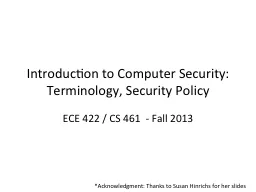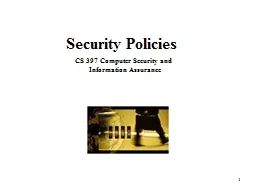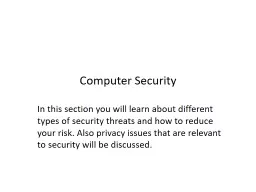PPT-Information and Computer Security
Author : sherrill-nordquist | Published Date : 2018-02-03
CPIS 312 Lab 9 1 MAC amp HASH FUNCTION TRIGUI Mohamed Salim To know what hashing is for Practice how to implement MD cipher 2 Lab Objectives Cryptographic hash
Presentation Embed Code
Download Presentation
Download Presentation The PPT/PDF document "Information and Computer Security" is the property of its rightful owner. Permission is granted to download and print the materials on this website for personal, non-commercial use only, and to display it on your personal computer provided you do not modify the materials and that you retain all copyright notices contained in the materials. By downloading content from our website, you accept the terms of this agreement.
Information and Computer Security: Transcript
Download Rules Of Document
"Information and Computer Security"The content belongs to its owner. You may download and print it for personal use, without modification, and keep all copyright notices. By downloading, you agree to these terms.
Related Documents














